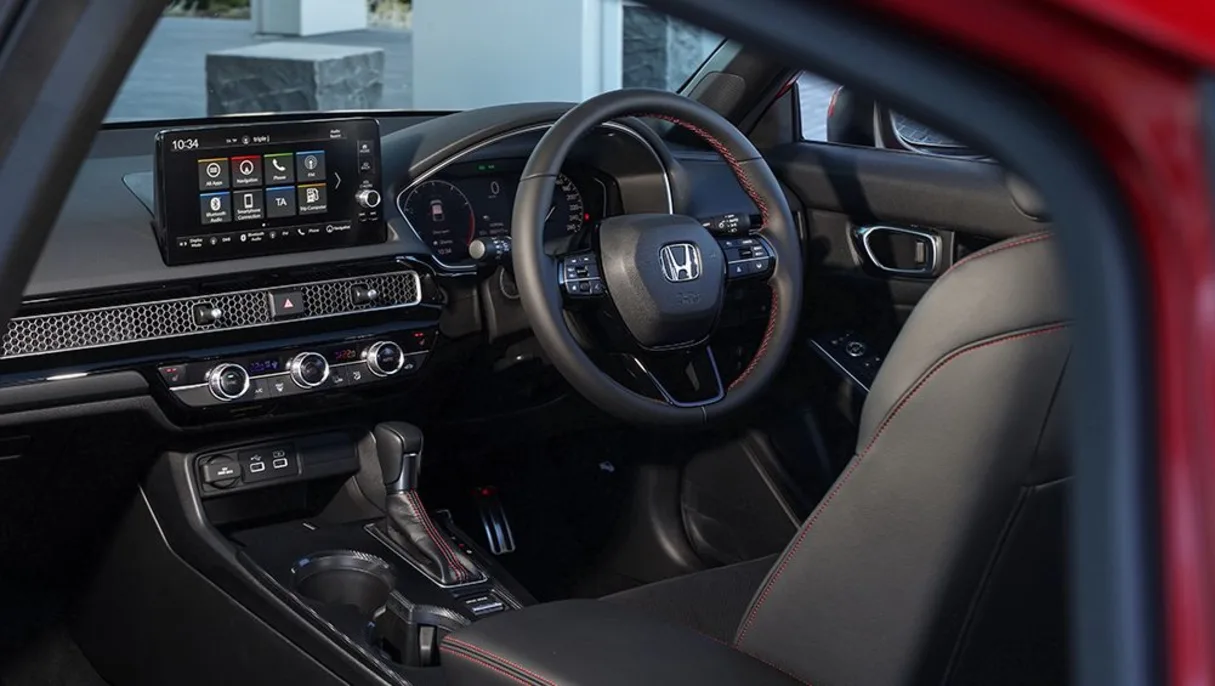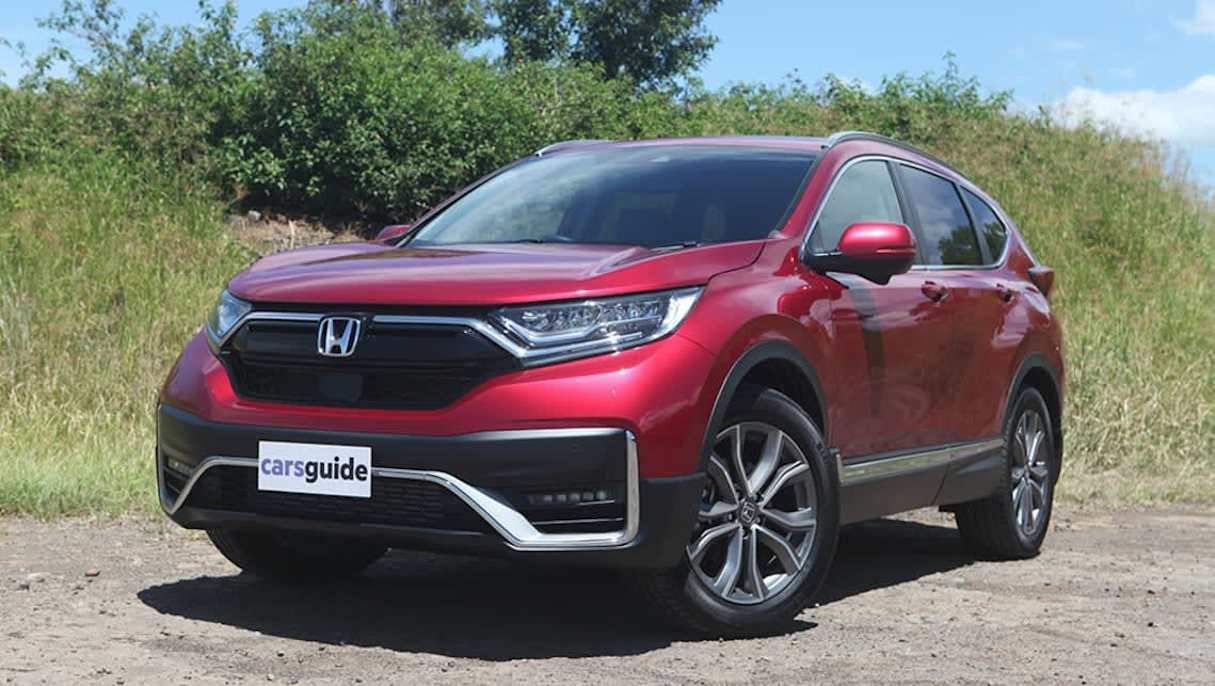The Honda CR-V was truly one of the original compact SUVs, hitting the market in 1997 as a rival for the first Toyota RAV4.
Over 25 years and five generations, it’s grown in size and sophistication, and while it no longer reaches the sales highs of the RAV4 or Mazda CX-5, it remains a popular pick for Australian families.
Honda is nearing the end of development of its all-important sixth-generation CR-V which is expected to see the light of day in the next 12 months. Here is everything we know about the hotly anticipated new medium SUV.
Platform
Much like how the outgoing fifth-generation CR-V shares its platform with the related Civic small car, the new version is expected to follow suit.
A new Civic arrived in Australian Honda showrooms last year, underpinned by a highly revised version of the previous model’s platform that ushered in improved body and chassis stiffness, a longer wheelbase and a more sophisticated suspension setup.
That ensured big improvements to the Civic’s ride and handling, which is expected to carry across to the new CR-V.
The current model has a comfortable ride, but it lacks the noise, vibration and harshness measures now found in the Civic. It’s expected that there will be a much greater focus on this with the next CR-V, as well as a greater emphasis on handling.
.webp)
Engines
The 1.5-litre turbocharged petrol engine found in all but the base version – as well as under the bonnet of the Civic, albeit in a lesser tune – is still quite new and almost guaranteed to carry over to the new-gen SUV, with some refinements.
The ageing 113kW 2.0-litre four-cylinder naturally aspirated engine in the entry-level CR-V Vi could finally be put out to pasture with the new-gen model. But this, or another 2.0-litre naturally aspirated petrol engine, is rumoured to surface in the petrol-electric hybrid version.
Yes, Honda is returning to the hybrid game in a big way, after dipping its toe in the water in the early 2010s with the Jazz, Civic, Insight and CR-Z hybrids that were dropped from the Australian line-up due to high prices and low uptake.
In the US, the current-gen CR-V is available as a hybrid that uses a 2.0-litre petrol engine and electric motor for a combined output of 158kW/315Nm.
Another possibility is that Honda lifts the hybrid setup from the upcoming new-gen HR-V small SUV. That system pairs a 1.5-litre petrol engine with dual electric motors on the front axle and a lithium-ion battery, offering a total system output of 96kW/253Nm and fuel consumption of 5.4L/100km.
A plug-in hybrid version of the current CR-V is offered in China as part of Honda’s joint venture with Dongfeng, but it’s unclear if this sort of powertrain will go global for the next CR-V.

Design
Honda has taken an arguably more conservative approach to design for its latest crop of new models. The new Civic dropped the edgy, angular, busy look of the tenth-gen model in favour of softer lines and a more palatable design.
The new HR-V also has smoothed out lines and a more classic – if slightly generic – design.
Expect the next CR-V to follow this theme. Patent drawings uncovered last month reveal a cleaner overall look, while some elements, like the integration of the headlights and the grille, are borrowed from the Civic.
The new model will incorporate some design cues that are familiar from previous generations, including the vertical taillights running down the rear of the D-pillar. It will be undeniably CR-V, but brought right up to date.

Interior
If the new Civic is anything to go by, then expect big changes inside for the CR-V.
Honda ditched the fussy, plastic-heavy dash and panels of the old Civic, opting for fewer buttons and layers and a much more appealing design.
Similarly, the new HR-V’s interior has dialled down the busy look for a cleaner vibe.
CR-V will adopt some of these elements, possibly including the horizontal theme from the Civic dash, as well as the latest version of Honda’s multimedia system perched atop the centre stack.
More premium seat and dash materials can also be expected.
The next CR-V is also expected to continue to be available with five or seven seats, and it should grow in size over the outgoing model.

Pricing
This is where things could get interesting.
The current CR-V ranges in price from $35,300 for the base five-seat 2.0L Vi front-wheel drive to $53,200 drive-away for the seven-seat 1.5L turbo VTi-LX all-wheel drive.
Honda took a controversial approach to pricing for its new-gen Civic, offering just one grade from $47,200 drive-away. That’s BMW and Audi territory.
Granted, Honda Australia is likely to offer more than just one grade for the HR-V and CR-V SUVs given SUVs sell in much higher volumes than hatchbacks these days.
But expect prices to rise over the current model. Honda’s shift last year to an agency sales model ushered in national drive-away pricing and price rises across its model range.
It’s unlikely we will see a base model Vi again, with Honda favouring higher grades with more spec.
We might see the CR-V more closely aligned price wise with the Volkswagen Tiguan, which is priced from $41,490 to $57,490, or possibly even higher.
Timing
Honda has not confirmed when it will reveal the next CR-V, but given the current one was revealed five-and-a-half years ago, the new one is expected to debut either late this year or early next year.
That would mean timing for Australia would be mid-to-late next year.
Keep an eye on CarsGuide for updates as more details come to hand.





.jpg)

.jpg)
.jpg)

.jpg)


.jpg)

.webp)


.jpg)
.jpg)
.jpg)
.jpg)

_0.jpg)

 (1).jpg)


.jpg)
